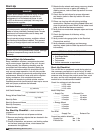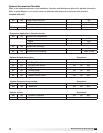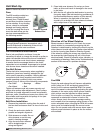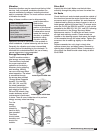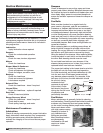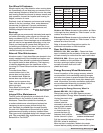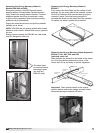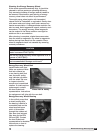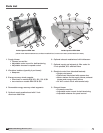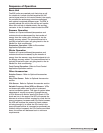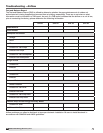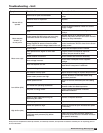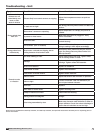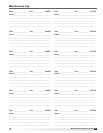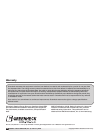
31
Model ERV Energy Recovery Unit
Sequence of Operation
Basic Unit
The ERV units are prewired such that when a call
for outside air is made (via field supplied 24 VAC
control signal wired to unit control center), the supply
fan, exhaust fan and energy wheel are energized
and optional motorized dampers open. The ERV is
normally slaved (24 volt) to the roof top air handler.
When the roof top air handler starts, the auxiliary
contactor in the air handler closes to start the ERV.
Summer Operation
Outdoor air is preconditioned (temperature and
moisture levels are decreased) by the transfer of
energy from the cooler, drier, exhaust air via the
energy recovery wheel. The preconditioned air is
typically mixed with return air going back to the air
handler for final conditioning.
Economizer Operation: Refer to Economizer
Application/Operation section.
Winter Operation
Outdoor air is preconditioned (temperature and
moisture levels are increased) by the transfer of
energy from the warmer, more humid exhaust air via
the energy recovery wheel. The preconditioned air is
typically mixed with return air going back to the air
handler for final conditioning.
Frost Control Operation: Refer to Frost Control
Application/Operation section.
Other Accessories:
Rotation Sensor: Refer to Optional Accessories
section
Dirty Filter Sensor: Refer to Optional Accessories
section
CO
2
Sensor: Refer to Optional Accessories section
Variable Frequency Drive (VFD) on Blowers: VFDs
on blowers are often used as part of a demand
control ventilation system. This type of system takes
advantage of varying occupancy through the use
of CO
2
sensors to monitor space CO
2
levels. If CO
2
levels are low in the space, the VFD will operate the
blowers at minimum airflow required by code. As the
space occupancy increases and CO
2
levels increase,
the VFD will increase the amount of fresh outdoor
air being brought in to offset the CO
2
levels in the
space (exhaust airflow is increased proportionally as
outdoor airflow increases). As CO
2
levels come back
down, the airflow will decrease back to minimum
requirements.




